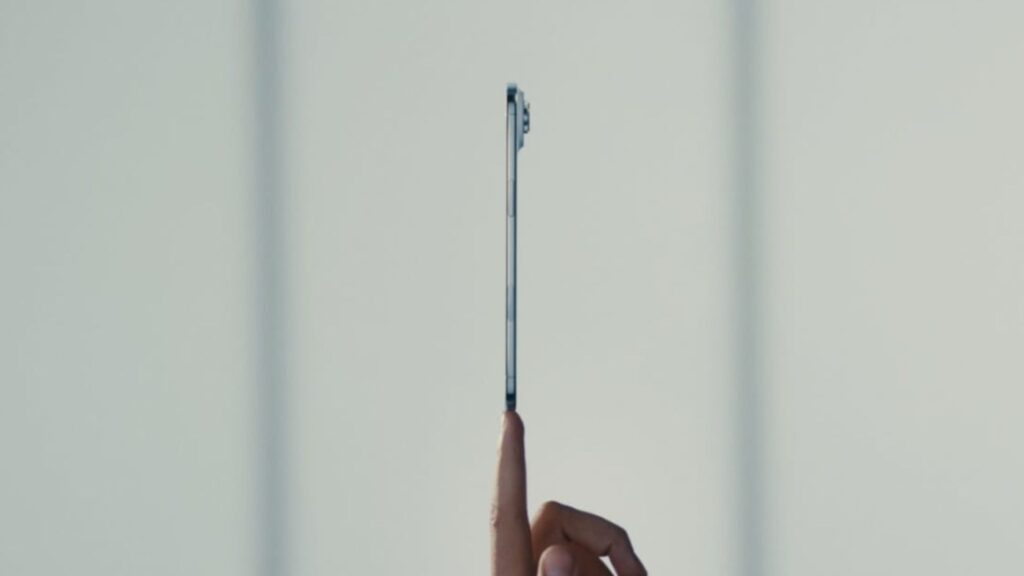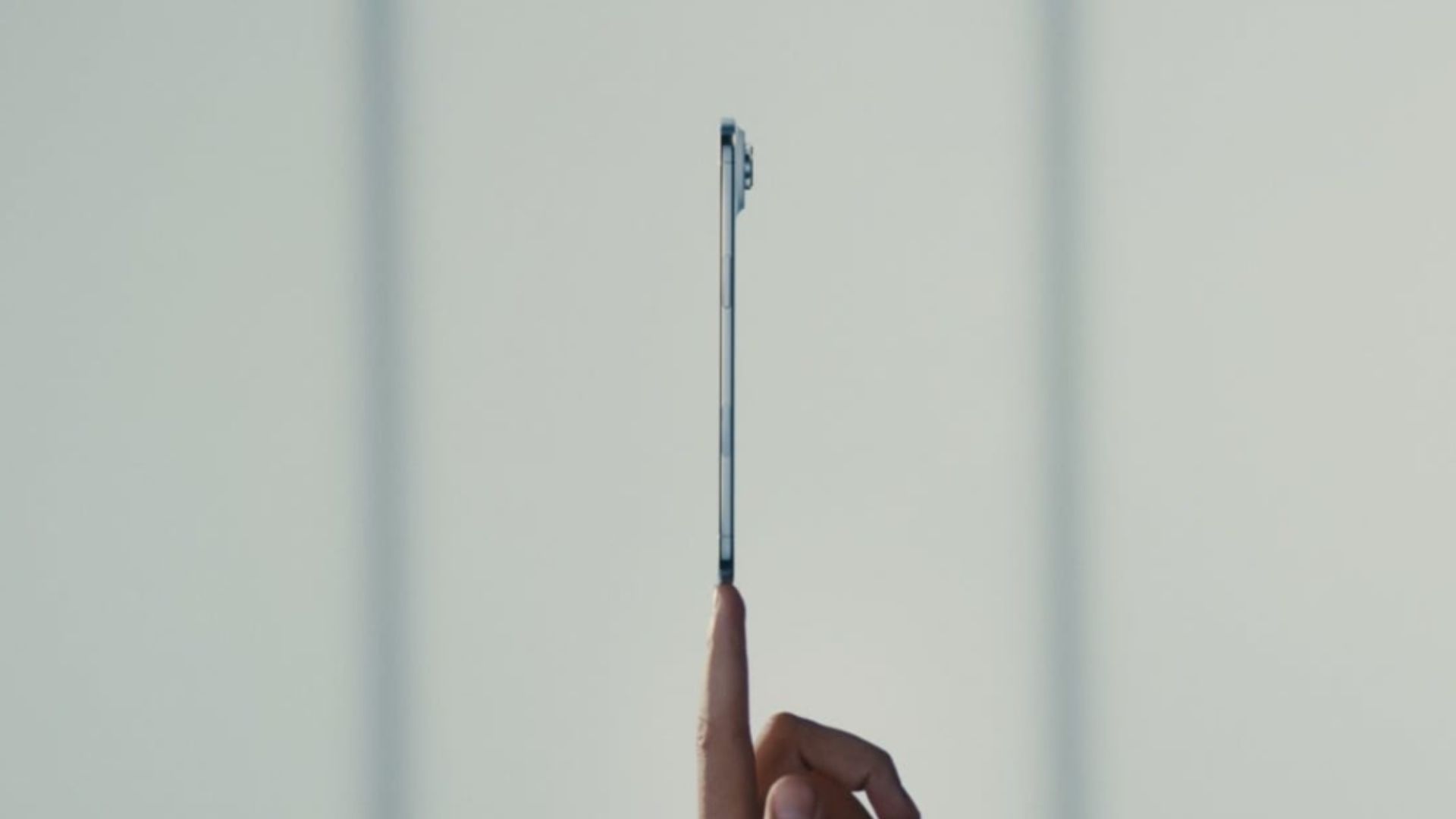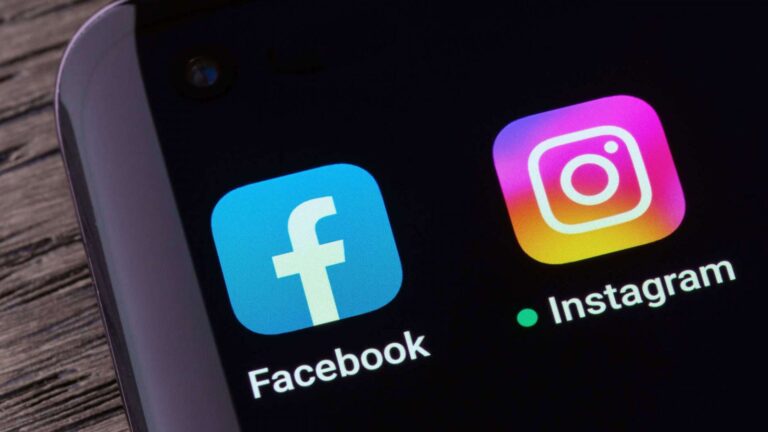
Apple officially introduced the iPhone Air, its thinnest smartphone ever, during the company’s highly anticipated September 9 “Awe Dropping” event. The launch not only showcased a major hardware refresh but also highlighted Apple’s evolving strategy under the economic weight of rising U.S. tariffs. The reveal of iOS 26 further positioned the company for its next chapter in user experience innovation.
A Revolutionary Ultra-Thin iPhone
The centerpiece of the event was the iPhone Air, which measures just 5.6mm thick, making it the slimmest iPhone in Apple history. CEO Tim Cook described it as the “biggest leap ever” in industrial design for the iPhone lineup, placing it between the iPhone 17 and iPhone 17 Pro models.
While ultra-thin devices are not entirely new in the smartphone market, Apple’s execution stands out due to its integration of premium materials, a 6.6-inch display with ProMotion 120Hz refresh rate, and peak brightness of 3,000 nits. Industry experts note that these specifications align with Apple’s longstanding focus on premium user experiences rather than racing competitors solely on specs.
The thin profile introduces a trade-off: a simplified single rear camera and reliance on an eSIM-only model, completely removing physical SIM card slots. Analysts suggest these changes indicate Apple’s gradual shift toward fully digital, cloud-connected mobile experiences.
Silicon Battery Technology
One breakthrough making the iPhone Air possible is its silicon anode battery technology, which offers greater power density compared to traditional graphite cells. This innovation allows Apple to maintain competitive battery performance despite the thinner casing—a balance many rivals struggle to achieve.
iOS 26 and the “Liquid Glass” Aesthetic
Alongside hardware, Apple highlighted its software evolution with iOS 26, marking the largest design overhaul since iOS 7. The new “Liquid Glass” interface layers transparency and fluid animation across the operating system, aiming to create what the company describes as an “expressive and delightful” experience.
Craig Federighi, Apple’s senior vice president of Software Engineering, emphasized that iOS 26 advances both form and function. “It shines with the gorgeous new design and meaningful improvements to the features users rely on every day, making iPhone even more helpful,” he said.
The update’s highlights include:
- Expanded Apple Intelligence integration, giving users smarter predictive features.
- Revamped Phone and Messages apps with added collaboration tools.
- Upgrades to CarPlay, Apple Music, Maps, and Wallet that integrate tightly across Apple’s ecosystem.
- A consistent design identity extended to iPadOS 26, macOS Tahoe 26, watchOS 26, and tvOS 26.
According to usability analysts, iOS 26’s cross-platform consistency strengthens Apple’s strategy to lock users deeper into its ecosystem while reinforcing a premium brand identity.
Tariff Pressures and Pricing Strategy
The showcase unfolded against rising trade tension. Apple estimates that tariffs under the Trump administration will cost the company more than $1 billion this quarter alone, with current reports placing already absorbed costs around $800 million. Projections indicate an additional $1.1 billion in September tariff impacts.
The critical question for analysts is whether Apple will pass these costs to consumers. According to CNBC, this could be the first major iPhone price hike in five years, with increases potentially ranging between $50 and $100 per model.
Yet, Apple is known for subtle pricing moves. Instead of a direct price increase, it may eliminate lower-storage models, effectively nudging customers toward higher-priced configurations. This approach minimizes consumer backlash while preserving profit margins under macroeconomic pressure.
Global Implications
For international buyers, particularly in Europe and Asia, currency fluctuations combined with tariff effects could amplify these costs. Industry observers warn that Apple’s premium positioning may face increasing scrutiny in markets where rival Android phones offer flagship features at lower starting prices.
Expanding the Hardware Ecosystem
Apple’s event also expanded its hardware portfolio:
- Apple Watch Series 11: Introduced with 5G cellular capabilities and more durable materials.
- Apple Watch Ultra 3: Added satellite-based Emergency SOS and extended 42-hour battery life.
- AirPods Pro 3: Enhanced active noise cancellation with new health-oriented features such as heart rate monitoring.
Analysts view these announcements as part of Apple’s strategy to differentiate through design innovation rather than incremental updates. By refreshing multiple product lines together, Apple communicates a unified ecosystem message: connectivity, consistency, and commitment to premium design.
Competitive Landscape and Innovation Pressure
Apple’s push for a slimmer, more integrated device portfolio aligns with market realities. Competing brands like Samsung and Xiaomi have experimented with ultra-thin and foldable devices, but Apple’s influence often sets the broader industry standard.
Market strategists believe the iPhone Air could be a precursor to Apple’s first foldable device, rumored for release in 2026. By acclimating users to thinner devices and new design compromises—such as camera simplification—Apple may be preparing the market for more dramatic form factor shifts in the near future.
Conclusion
The debut of the iPhone Air and iOS 26 underscores Apple’s dual strategy: staying at the forefront of hardware design while expanding its digital ecosystem. Despite tariff headwinds, Apple signals confidence in its ability to balance innovation, pricing, and global competitiveness.
For consumers, the iPhone Air delivers a strikingly thin design backed by advanced battery technology, while iOS 26 introduces a unified software vision. For analysts, it represents Apple’s ongoing navigation of economic challenges and competitive pressures.
As industry experts note, Apple’s message is clear: form, function, and ecosystem integration remain the pillars of its future—even when global economics are less forgiving.












I don’t think the title of your article matches the content lol. Just kidding, mainly because I had some doubts after reading the article. https://accounts.binance.info/fr-AF/register-person?ref=JHQQKNKN